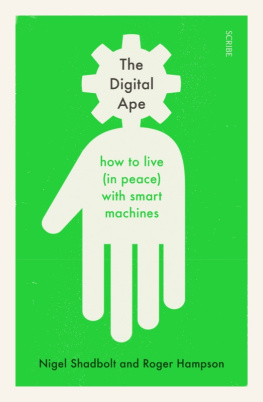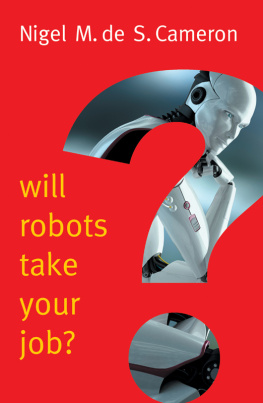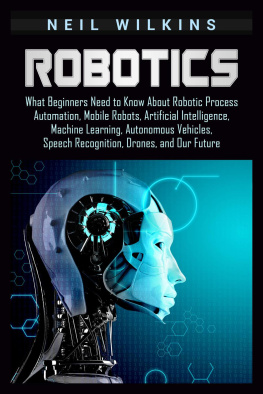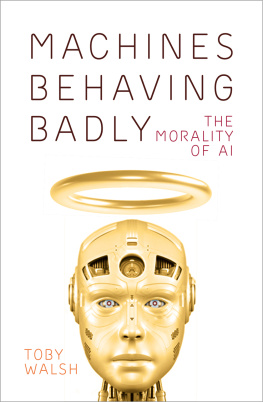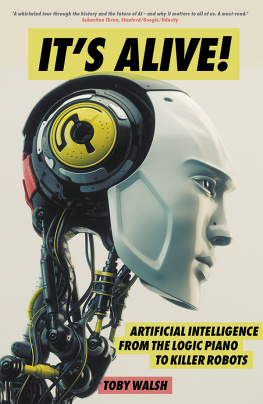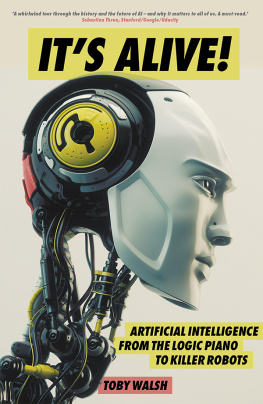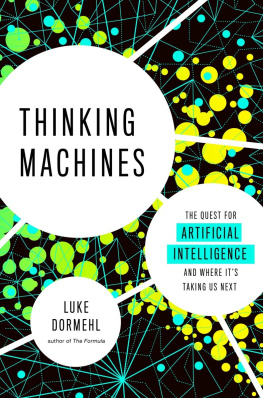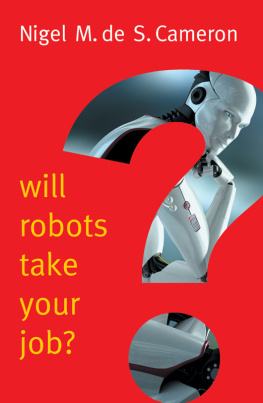
THE DIGITAL APE
Sir Nigel Shadbolt is one of the UKs foremost computer scientists. He is a leading researcher in artificial intelligence and was one of the originators of the interdisciplinary field of web science. He is Principal of Jesus College Oxford and a Professor of Computer Science at the University of Oxford. He is chairman of the Open Data Institute which he co-founded with Sir Tim Berners-Lee. Both of them leading the development of the highly acclaimed data.gov.uk website. In 2010, he joined the UK governments Public Sector Transparency Board overseeing Open Data releases across the public sector. He is a Fellow of the Royal Society, the Royal Academy of Engineering, a Fellow and former President of the British Computer Society. He was knighted in 2013 for services to science and engineering.
Roger Hampson is an academic and public servant. For 16 years, he was chief executive of the London Borough of Redbridge, which has a strong reputation for web-based innovation in service delivery, engagement of citizens, and the publication of data. He has also been a director of social services, an academic economist of social policy, and a research fellow at the Personal Social Services Research Unit, University of Kent, the world leader in the promotion of efficiency in social and health care by the rigorous analysis of data. He is a non-executive director of the Open Data Institute. He has published on plain language; the economics of political advertising; community care; social services; and reasoning in public life.
Scribe Publications
1820 Edward St, Brunswick, Victoria 3056, Australia
2 John St, Clerkenwell, London, WC1N 2ES, United Kingdom
Published by Scribe 2018
Copyright Nigel Shadbolt & Roger Hampson 2018
All rights reserved. Without limiting the rights under copyright reserved above, no part of this publication may be reproduced, stored in or introduced into a retrieval system, or transmitted, in any form or by any means (electronic, mechanical, photocopying, recording or otherwise) without the prior written permission of the publishers of this book.
The moral rights of the authors have been asserted.
Every effort has been made to trace owners of material in copyright in English where permission to reproduce is obligatory, but Scribe has been unable to reach all such owners. Please write to us to clarify any usage prior to future reprints.
Excerpts from The Love Song of J. Alfred Prufrock and The Rock by T. S. Eliot taken from The Poems of T. S. Eliot Volume 1: Collected and Uncollected Poems (Copyright T. S. Eliot). Reprinted by permission of Faber and Faber Ltd.
At the time of writing, all quotations taken from web pages were accurate and all URLs linked to existing websites. The publisher is not responsible for and should not be deemed to endorse or recommend any website other than our own or any content available on the internet (including without limitation, any website, blog post, or information page) that is not created by the publisher.
9781925322545 (Australian edition)
9781911344629 (UK edition)
9781925548747 (e-book)
CiP records for this title are available from the British Library and the National Library of Australia.
scribepublications.com.au
scribepublications.co.uk
Where is the wisdom we have lost in knowledge?
Where is the knowledge we have lost in information?
T. S. Eliot
Contents
Chapter 1
Chapter 2
Chapter 3
Chapter 4
Chapter 5
Chapter 6
Chapter 7
Chapter 8
Chapter 9
Chapter 1
Biology and technology
OVER 50 YEARS ago, in 1967, Desmond Morris published The Naked Ape . Darwins theory of the nature and origin of the human animal had, by then, been conventional wisdom amongst academics for 100 years. Now, a mass readership was pleased to be startled by a racy new perspective on many matters they took for granted in everyday life. The opening paragraph both set the scientific tone and teased the prudish, a requirement of any self-respecting 1960s bestseller:
There are one hundred and ninety-three living species of monkeys and apes. One hundred and ninety-two of them are covered with hair. The exception is a naked ape self-named Homo sapiens . This unusual and highly successful species spends a great deal of time examining his higher motives and an equal amount of time studiously ignoring his fundamental ones. He is proud that he has the biggest brain of all the primates, but attempts to conceal the fact that he has the biggest penis, preferring to accord this honour falsely to the mighty gorilla.
The Naked Ape: a zoologists study of the human animal , 1967
The word naked is deployed with skilful ambiguity. At first blush, it means that Man (which then meant Woman, too) abandoned growing his own fur, in favour of nakedness and the ability to make clothes adapted to different climates and seasons, moods and messages. This is a good metaphor for all the other modern human traits that require a step change from a natural world to a socially constructed one, where the successful brute displays strategy, practical understanding, and a thousand varieties of advanced technical eptitude. The word also means, of course, that The Naked Ape will reveal the bare truth about the hidden desires of readers and their neighbours, invoking as evidence surprisingly familiar behaviours and bodily urges manifested by our less inhibited, less dishonest, mammal cousins. We zoologists, it claims, have social permission to put on our white coats and tell true dirty stories that ordinary politeness forbids because plus or minus a few genuine errors we know the facts, and have a duty to announce them despite conventional morals.
The present authors have borrowed two of Dr Morris three words, in a blatant homage to an excellent scientist and a great populariser, a multi-talented man, one of whose rather good surrealist paintings graced the front cover of the first edition of The Selfish Gene by his friend Richard Dawkins. Wonderful metaphor though it was, we would argue that the nakedness itself, and the patterns of behaviour revealed when conventional modesty is cast aside, are no longer the aspects of this extraordinary ape most urgently in need of stripping bare.
A book should have a narrative arc, to take its readers on a journey. Ours is simple enough. We look at how the use of tools by early human species predates Homo sapiens by perhaps 3 million years, and was indeed one of the causes of the existence of our species, rather than a consequence. Much of our modern habitat is self-created, fashioned with the successors to the tools that fashioned us. We examine the key characteristics of that sophisticated technological environment. We link this to plain expressions of some of the hypotheses neuroscientists now use to model that most difficult subject, the nature of mind and brain. We contemplate what this tells us about Homo sapiens in a hyper-complex world, and make some well-grounded (we hope) predictions about how this habitat will rapidly develop, and how human nature, always in conjunction with technology, may well change with it.
Our central thesis is that we are now a truly digital ape. The elaborate products of our science stand in a new relation to us. The reader knows intimately many of the everyday manifestations of our extraordinary technology. Start with the dark marks here on this white page: more books are now bought via the World Wide Web than are bought in bricks-and-mortar stores. The odds are that this word-processed text, sent electronically to the publisher, was acquired online; a symbolic transaction in the ether, made real in the physical world by a huge computer-guided distribution system. Interestingly, only about a sixth of copies will be consumed by an ape with an e-reader. The ape constantly manipulates a smartphone, and commutes to a wired-up workplace on vehicles commanded by electronic engine management and radio signals from a central control room. Yet still mostly prefers, as do the present authors, the pleasure of turning paper leaves.
Next page

